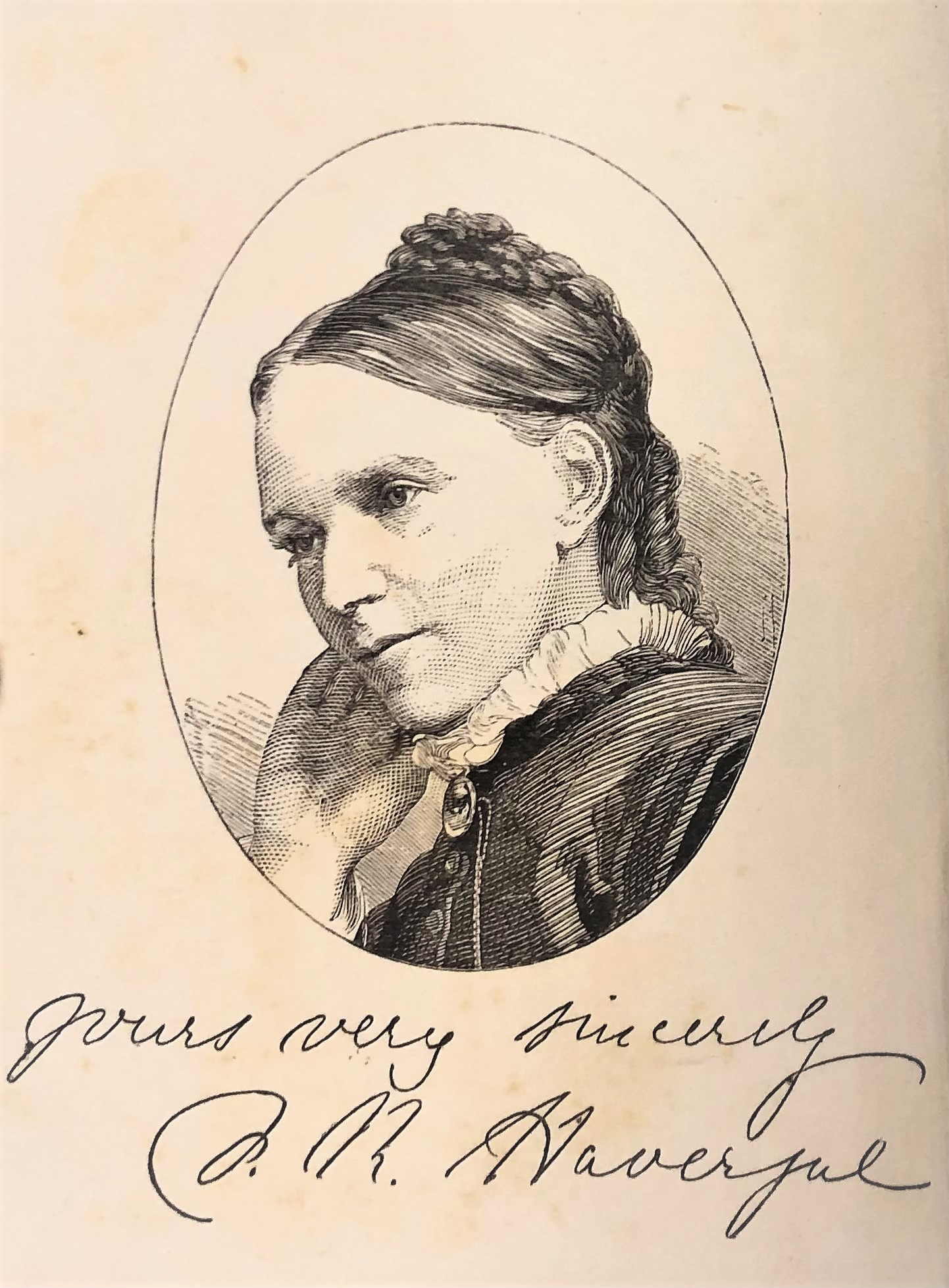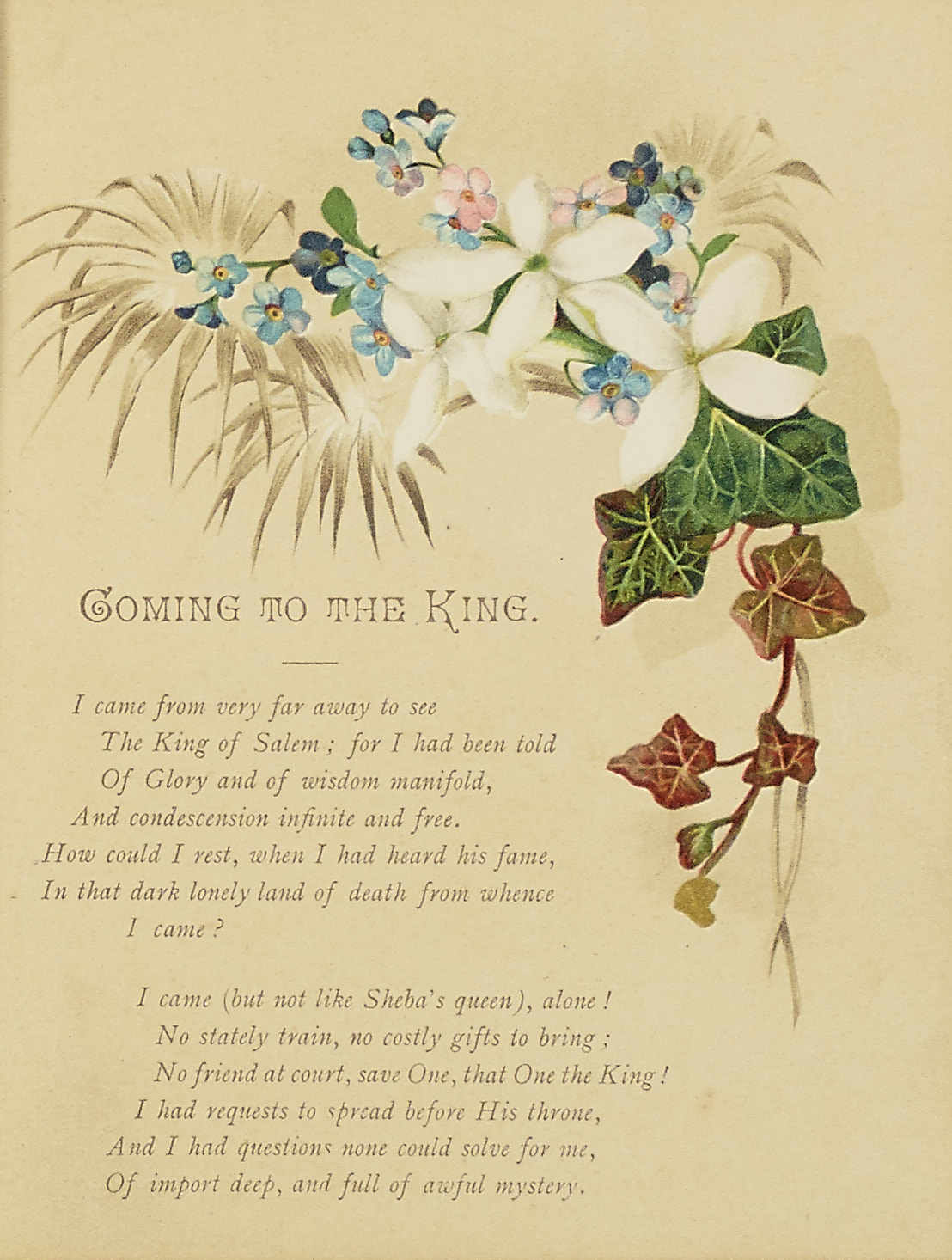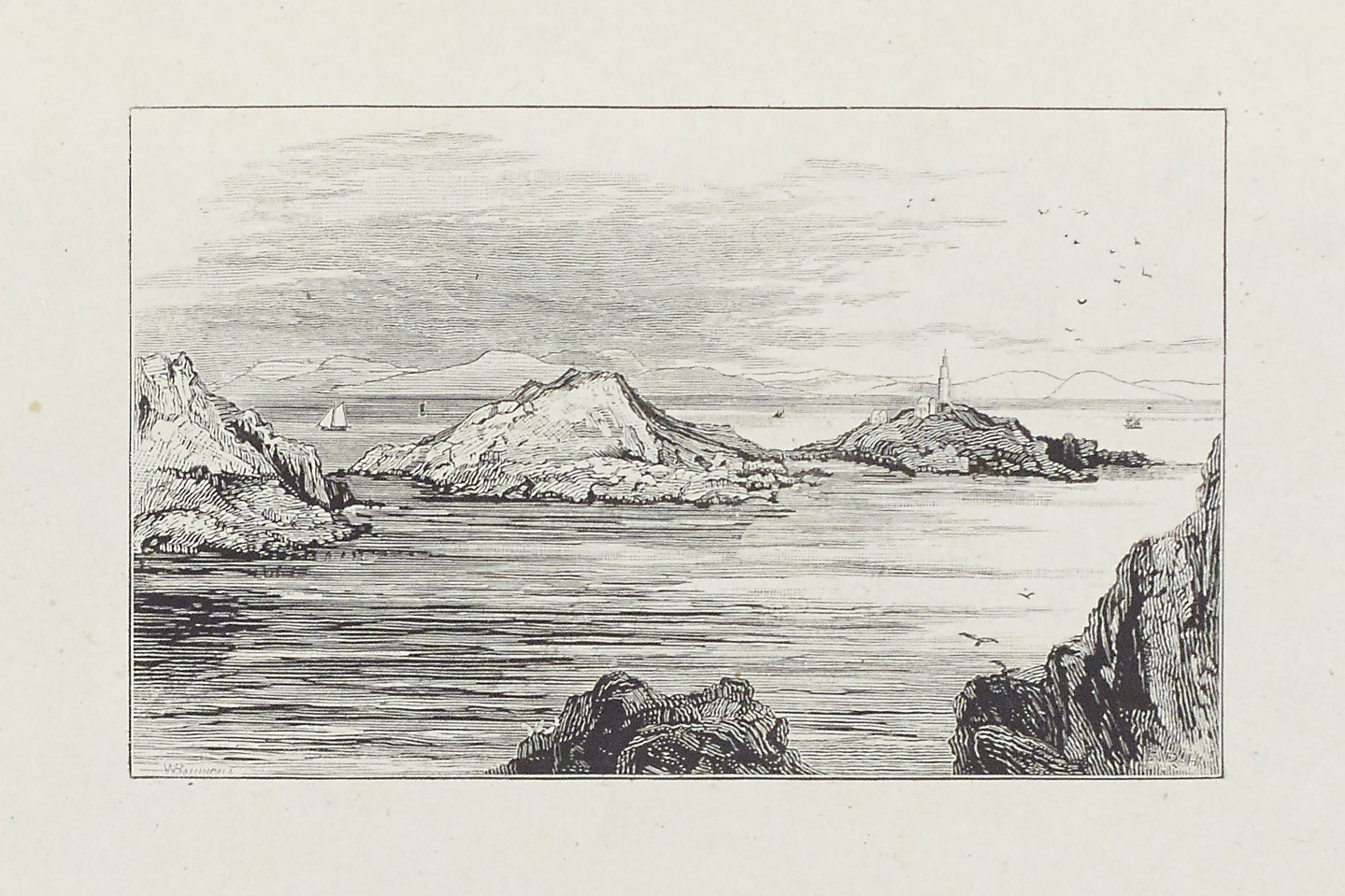A life lived in spiritual devotion: Frances Ridley Havergal, Part Two
- 18th December 2023
More from the recently catalogued deposit highlights Havergal’s impressive body of work, despite a life cut short. If you missed Part One, find it here.
‘Writing is praying with me: for I never seem to write even a verse by myself’, said Frances Ridley Havergal. This is perhaps unsurprising given the English religious poet and hymnwriter’s depth of devotion to her Christian faith. She wrote poetry, but only to express the spiritual lessons she learnt. When she sang, she sang sacred music simply with the purpose of winning souls. She mastered many languages but studied Greek and Hebrew primarily to better understand the Bible. Her artistic talents and religious conviction combined to produce an immense creative output; leading her to publish books, letters and leaflets as well as teach. The English composer William Havergal Brian (known as Havergal Brian and born William Brian) even adopted the Havergal name in tribute to Frances and her family.
For researchers interested in Frances’ life and work, four recently catalogued deposits relating to her, and her family, offer a treasure trove of material; from published books to pages of handwritten and printed music composed by her and with lyrics and poems written by her. As well as biographical research in the form of manuscript and typescript drafts by Audrey Smith, collated during the 1970s.

Frances Ridley Havergal, Within the Palace Gates, 19th Century: Ref: 899:749 BA13545/3/12
Although Frances’ sisters published much of her work posthumously, she nevertheless delivered a remarkable amount of it during her lifetime. Her artistic abilities were prominent since childhood. This is perhaps best evidenced by a handwritten collection of Frances’ poems collated by her sister Jane Miriam Havergal (Crane), where the majority were written when she was a little child (though concluding ones have been added at intervals over the years). Though her religious convictions were distinctly set forth in her texts, she claimed only to write what was dictated to her by Him.
Her hymns and poems were often printed as leaflets or ornamental cards, as well as gathered together in books. Of these, her best known collections are considered The Ministry of Song (1871), Under the Surface (1874) and Under His Shadow (1879). Ministry was Frances’ first book, which she prepared upon her father’s death in 1890 and published in his memory. She also wrote books for children, including the autobiographical Four Happy Days, as well as, Little Pillows, Goodnight Thoughts for the Little Ones (1875), Morning Bells, Walking Thoughts for Little Ones (1875) and My King: Daily Thoughts for The King’s Children (1877). Her most famous hymn, Take my life and let it be, appears in the book Songs of Peace & Joy – a collaborative effort between her and the Scottish composer, Charles Henry Purday.

Hymn by Frances Ridley Havergal, Coming to The King, 19th Century: Ref 899:749 BA13545/5/7
Of the printed texts we hold – either written by or relating to Frances – several were passed down or gifted to family members by family members. These often include affectionate inscriptions, primarily to her niece and nephew Frances Anna and William Henry Shaw, from their ‘loving Aunt Fanny’. Many also include beautiful colour illustrations by Baroness Helga Von Cramm – a good friend of the Havergal family – printed alongside Frances’ poems and hymns. Frances was herself a talented artist, and in her Bible Study for the Sundays of the Year, published posthumously, an engraving of The Mumbles Lighthouse, near Swansea, is taken from a sketch drawn by her when she was just seventeen. The original can be found in a sketchbook of her pencil drawings that we hold.
As demand for Frances’ writing grew, her books occupied much of her time. Yet her loyalty to God saw her continue to support Christian societies and good causes – often addressing or singing at religious meetings and services; and she continued quietly promoting her Saviour’s cause amongst her friends and neighbours. Frances enjoyed travel and attended foreign missions, but she also taught at St Nicholas Sunday School in Worcester. In 1860, the class of girls she educated there presented her with a leather-bound copy of The Book of Church Services – bequeathed first to her great-niece Catherine Havergal Shaw before coming to us.

The Mumbles’ Lighthouse, etching from a sketch taken by Frances Ridley Havergal, : Ref 899:749 BA13545
Having been plagued by ill health her whole life, on the 3rd of June 1879, Frances died of peritonitis, aged just forty-two. She lived her final years at Caswell Bay in Swansea, where her desk overlooked its rocks, and she watched sunsets with her sister/s. She is buried in her beloved Astley at St Peter’s Parish Church alongside her father and close to her sister Maria.
The items mentioned in this blog are all available to research subject to access conditions. Please submit an enquiry via our website or speak to someone on the desk if you would like to enquire about viewing them. A copy of Memorials of Frances Ridley Havergal by Maria Vernon Graham Havergal can be found in our Reference Library on Level 2 of The Hive.
Post a Comment